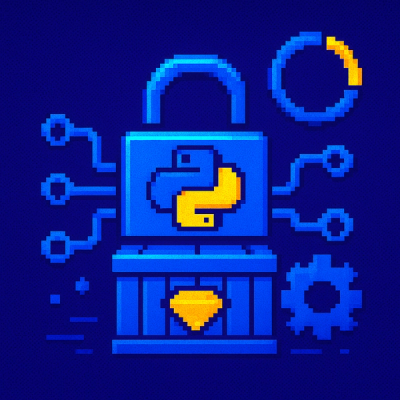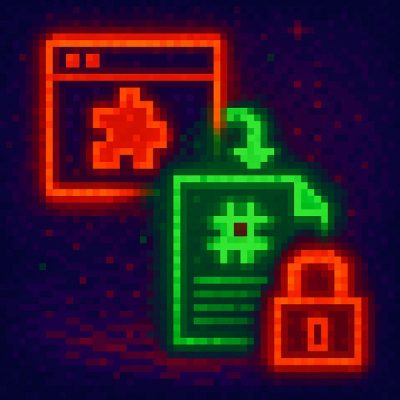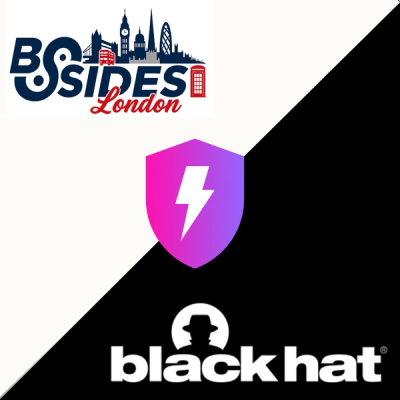
Security News
PyPI Expands Trusted Publishing to GitLab Self-Managed as Adoption Passes 25 Percent
PyPI adds Trusted Publishing support for GitLab Self-Managed as adoption reaches 25% of uploads
@parse/node-apn
Advanced tools
A Node.js module for interfacing with the Apple Push Notification service.
$ npm install @parse/node-apn --save
This readme is a brief introduction; please refer to the full documentation in doc/ for more details.
If you have previously used v1.x and wish to learn more about what's changed in v2.0, please see What's New
var apn = require('@parse/node-apn');
Create a new connection to the Apple Push Notification provider API, passing a dictionary of options to the constructor. You must supply your token credentials in the options.
var options = {
token: {
key: "path/to/APNsAuthKey_XXXXXXXXXX.p8",
keyId: "key-id",
teamId: "developer-team-id"
},
production: false
};
const apnProvider = new apn.Provider(options);
By default, the provider will connect to the sandbox unless the environment variable NODE_ENV=production is set.
For more information about configuration options, consult the provider documentation.
Help with preparing the key and certificate files for connection can be found in the [wiki][certificateWiki]
[!WARNING] You should only create one
Providerper-process for each certificate/key pair you have. You do not need to create a newProviderfor each notification. If you are only sending notifications to one app, there is no need for more than oneProvider.If you are constantly creating
Providerinstances in your app, make sure to callProvider.shutdown()when you are done with each provider to release its resources and memory.
If you need to connect through an HTTP proxy, you simply need to provide the proxy: {host, port} option when creating the provider. For example:
var options = {
token: {
key: "path/to/APNsAuthKey_XXXXXXXXXX.p8",
keyId: "key-id",
teamId: "developer-team-id"
},
proxy: {
host: "192.168.10.92",
port: 8080
}
production: false
};
const apnProvider = new apn.Provider(options);
The provider will first send an HTTP CONNECT request to the specified proxy in order to establish an HTTP tunnel. Once established, it will create a new secure connection to the Apple Push Notification provider API through the tunnel.
Because http/2 already uses multiplexing, you probably don't need to use more than one client unless you are hitting http/2 concurrent request limits.
var options = {
// Round robin pool with 2 clients. More can be used if needed.
clientCount: 2,
token: {
key: "path/to/APNsAuthKey_XXXXXXXXXX.p8",
keyId: "key-id",
teamId: "developer-team-id"
},
proxy: {
host: "192.168.10.92",
port: 8080
},
production: false
};
const apnProvider = new apn.MultiProvider(options);
To send a notification, you will first need a device token from your app as a string.
let deviceToken = "a9d0ed10e9cfd022a61cb08753f49c5a0b0dfb383697bf9f9d750a1003da19c7"
Create a notification object, configuring it with the relevant parameters (See the notification documentation for more details.)
let note = new apn.Notification();
note.expiry = Math.floor(Date.now() / 1000) + 3600; // Expires 1 hour from now.
note.badge = 3;
note.sound = "ping.aiff";
note.alert = "\uD83D\uDCE7 \u2709 You have a new message";
note.payload = {'messageFrom': 'John Appleseed'};
note.topic = "<your-app-bundle-id>";
Send the notification to the API with send, which returns a promise.
try {
const result = apnProvider.send(note, deviceToken);
// see documentation for an explanation of result
} catch(error) {
// Handle error...
}
This will result in the following notification payload being sent to the device.
{"messageFrom":"John Appelseed","aps":{"badge":3,"sound":"ping.aiff","alert":"\uD83D\uDCE7 \u2709 You have a new message"}}
Create a Live Activity notification object and configure it with the relevant parameters (See the notification documentation for more details.)
let note = new apn.Notification();
note.topic = "<your-app-bundle-id>.push-type.liveactivity";
note.expiry = Math.floor(Date.now() / 1000) + 3600; // Expires 1 hour from now.
note.pushType = "liveactivity",
note.badge = 3;
note.sound = "ping.aiff";
note.alert = "\uD83D\uDCE7 \u2709 You have a new message";
note.payload = {'messageFrom': 'John Appleseed'};
note.relevanceScore = 75,
note.timestamp = Math.floor(Date.now() / 1000); // Current time
note.staleDate = Math.floor(Date.now() / 1000) + (8 * 3600); // Expires 8 hour from now.
note.event = "update"
note.contentState = {}
Send the notification to the API with send, which returns a promise.
try {
const result = await apnProvider.send(note, deviceToken);
// see the documentation for an explanation of the result
} catch (error) {
// Handle error...
}
This will result in the following notification payload being sent to the device.
{"messageFrom":"John Appleseed","aps":{"badge":3,"sound":"ping.aiff","alert":"\uD83D\uDCE7 \u2709 You have a new message", "relevance-score":75,"timestamp":1683129662,"stale-date":1683216062,"event":"update","content-state":{}}}
Starting in iOS 18 and iPadOS 18 Live Activities can be used to broadcast push notifications over channels. To do so, you will need your apps' bundleId.
let bundleId = "com.node.apn";
Create a notification object, configuring it with the relevant parameters (See the notification documentation for more details.)
let note = new apn.Notification();
note.requestId = "0309F412-AA57-46A8-9AC6-B5AECA8C4594"; // Optional
note.payload = {'message-storage-policy': '1', 'push-type': 'liveactivity'}; // Required
Create a channel with manageChannels and the create action, which returns a promise.
try {
const result = await apnProvider.manageChannels(note, bundleId, 'create');
// see the documentation for an explanation of the result
} catch (error) {
// Handle error...
}
If the channel is created successfully, the result will look like the following:
{
apns-request-id: '0309F412-AA57-46A8-9AC6-B5AECA8C4594',
apns-channel-id: 'dHN0LXNyY2gtY2hubA==' // The new channel
}
Similarly, manageChannels has additional actions that allow you to read, readAll, and delete channels. The read and delete actions require similar information to the create example above, with the exception that they require note.channelId to be populated. To request all active channel id's, you can use the readAll action:
try {
const result = await apnProvider.manageChannels(note, bundleId, 'readAll');
// see the documentation for an explanation of the result
} catch (error) {
// Handle error...
}
After the promise is fulfilled, result will look like the following:
{
apns-request-id: 'some id value',
channels: ['dHN0LXNyY2gtY2hubA==', 'eCN0LXNyY2gtY2hubA==' ...] // A list of active channels
}
Further information about managing channels can be found in Apple's documentation.
Starting in iOS 18 and iPadOS 18, after a channel is created using manageChannels, broadcast push notifications can be sent to any device subscribed to the respective channelId created for a bundleId. A broadcast notification looks similar to a standard Live Activity notification mentioned above but requires note.channelId to be populated. An example is below:
let note = new apn.Notification();
note.channelId = "dHN0LXNyY2gtY2hubA=="; // Required
note.expiry = Math.floor(Date.now() / 1000) + 3600; // Expires 1 hour from now.
note.pushType = "liveactivity",
note.badge = 3;
note.sound = "ping.aiff";
note.alert = "\uD83D\uDCE7 \u2709 You have a new message";
note.payload = {'messageFrom': 'John Appleseed'};
note.relevanceScore = 75,
note.timestamp = Math.floor(Date.now() / 1000); // Current time
note.staleDate = Math.floor(Date.now() / 1000) + (8 * 3600); // Expires 8 hour from now.
note.event = "update"
note.contentState = {}
Send the broadcast notification to the API with broadcast, which returns a promise.
try {
const result = await apnProvider.broadcast(note, bundleId);
// see documentation for an explanation of result
} catch (error) {
// Handle error...
}
Further information about broadcast notifications can be found in Apple's documentation.
FAQs
An interface to the Apple Push Notification service for Node.js
The npm package @parse/node-apn receives a total of 80,171 weekly downloads. As such, @parse/node-apn popularity was classified as popular.
We found that @parse/node-apn demonstrated a healthy version release cadence and project activity because the last version was released less than a year ago. It has 4 open source maintainers collaborating on the project.
Did you know?

Socket for GitHub automatically highlights issues in each pull request and monitors the health of all your open source dependencies. Discover the contents of your packages and block harmful activity before you install or update your dependencies.

Security News
PyPI adds Trusted Publishing support for GitLab Self-Managed as adoption reaches 25% of uploads

Research
/Security News
A malicious Chrome extension posing as an Ethereum wallet steals seed phrases by encoding them into Sui transactions, enabling full wallet takeover.

Security News
Socket is heading to London! Stop by our booth or schedule a meeting to see what we've been working on.